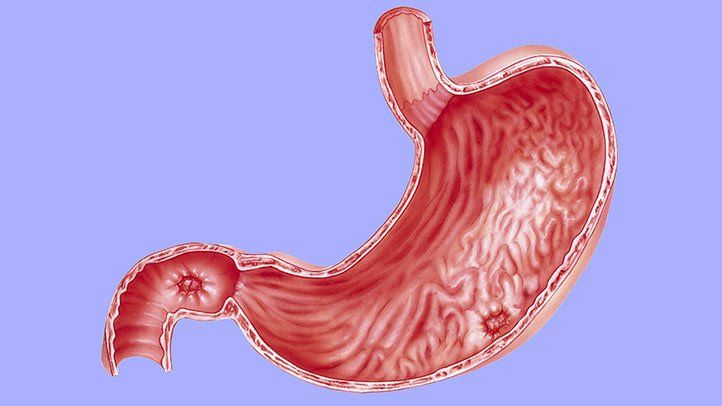Duodenal ulcer due to h. pylori, a prevalent form of peptic ulcer disease, are primarily caused by infection with Helicobacter pylori (H. pylori). This bacterium disrupts the mucosal lining of the duodenum, leading to ulceration. Understanding the relationship between H. pylori and duodenal ulcers is crucial for effective diagnosis, treatment, and prevention.

Etiology of H. pylori-Induced Duodenal Ulcers
The Role of H. pylori
H. pylori is a gram-negative, spiral-shaped bacterium that colonizes the gastric mucosa. It is implicated in approximately 95% of duodenal ulcer cases. The bacterium’s helical shape and flagella facilitate its penetration into the mucosal layer, where it induces inflammation and disrupts mucosal integrity, predisposing the duodenum to ulceration.
Pathophysiological Mechanisms
Upon colonization, H. pylori employs several mechanisms contributing to duodenal ulcer formation:
- Urease Production: H. pylori produces urease, an enzyme that hydrolyzes urea to ammonia, neutralizing gastric acid and enabling bacterial survival in the acidic environment. The resultant ammonia is toxic to epithelial cells, leading to mucosal damage.
- Cytotoxin-Associated Gene A (CagA): Strains expressing the CagA protein are associated with increased virulence. CagA disrupts cellular functions and promotes inflammation, exacerbating mucosal injury.
- Vacuolating Cytotoxin A (VacA): This toxin induces vacuole formation in gastric epithelial cells, contributing to cell death and mucosal damage.
- Inflammatory Response: The infection triggers a robust immune response, leading to the release of pro-inflammatory cytokines. Chronic inflammation results in increased gastric acid secretion and further mucosal injury.
Clinical Manifestations
Duodenal ulcers present with a spectrum of symptoms, including:
- Epigastric Pain: A burning or gnawing sensation in the upper abdomen, often occurring 2-3 hours postprandially or during the night, and relieved by food intake or antacids.
- Bloating and Abdominal Fullness: Patients may experience a sensation of fullness or bloating.
- Nausea and Vomiting: These symptoms may accompany the abdominal discomfort.
- Weight Changes: Unintentional weight loss or, less commonly, weight gain due to altered eating habits to alleviate pain.
Diagnostic Evaluation
Accurate diagnosis involves a combination of clinical assessment and diagnostic testing:
- Non-Invasive Tests:
- Urea Breath Test: Detects labeled carbon dioxide in the breath after ingestion of a urea solution, indicating urease activity of H. pylori.
- Stool Antigen Test: Identifies H. pylori antigens in fecal samples.
- Invasive Tests:
- Endoscopy with Biopsy: Allows direct visualization of the ulcer and histological examination of biopsy samples for H. pylori detection.
Treatment Strategies
Eradication of H. pylori is paramount in managing duodenal ulcers. Treatment regimens include:
- Triple Therapy: A combination of a proton pump inhibitor (PPI), clarithromycin, and amoxicillin or metronidazole for 14 days.
- Bismuth-Based Quadruple Therapy: Incorporates a PPI, bismuth subsalicylate, tetracycline, and metronidazole, especially useful in areas with high clarithromycin resistance.
- Sequential Therapy: Involves a PPI and amoxicillin for the initial 5 days, followed by a PPI, clarithromycin, and metronidazole for the subsequent 5 days.
Adherence to the full course of therapy is essential to ensure eradication and prevent recurrence.
Prevention and Risk Reduction
Preventive measures focus on reducing transmission and mitigating risk factors:
- Hygiene Practices: Regular handwashing and consuming properly prepared food and water can decrease infection risk.
- Judicious NSAID Use: Limiting the use of non-steroidal anti-inflammatory drugs, which can exacerbate mucosal damage.
- Lifestyle Modifications: Avoiding smoking and excessive alcohol consumption, both of which impair mucosal defenses and promote ulcer formation.